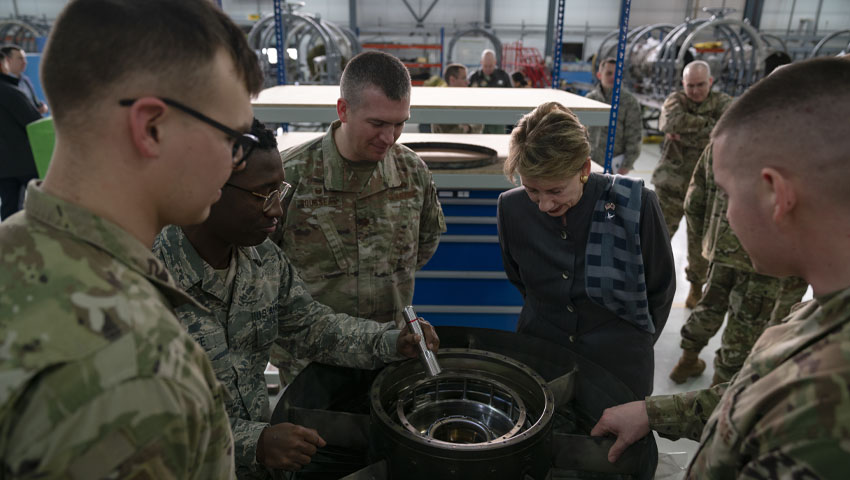US Secretary of the Air Force Barbara Barrett, alongside the secretaries of the other US military branches, has outlined a plan to develop multi-domain, joint military doctrines pledging to work closely to fulfil the mandates of the National Defense Strategy.
To continue reading the rest of this article, please log in.
Create free account to get unlimited news articles and more!
Appearing at the Center for Strategic and International Studies with Army Secretary Ryan McCarthy and acting Navy Secretary Thomas Modly, Secretary Barrett also emphasised the importance of space and continuing to reform – and streamline – the department’s acquisitions process, as well as advancing new capabilities for warfighting, joint operations and ensuring superiority in space.
With the recently released fiscal year federal 2021 budget, all three secretaries said the services are working to “strike the right balance” between maintaining legacy systems, divesting where appropriate and putting money into new technologies, systems and warfighting approaches that meet emerging threats such as those posed by China and Russia.
"We are working especially hard to look for ways of process reform, building faster, better processes. Our acquisition process has been too cumbersome, too slow. We need to find ways of doing that faster. We need to minimise risk but at the same time we are looking for the best tools and investing in more modern, more capable, more lethal equipment. With all of that, building our space capabilities," Secretary Barrett said.
She highlighted the imperative of bringing into reality a data-intensive, fully interconnected system known as Joint All Domain Command and Control (JADC2) for collecting, sharing and analysing information and connecting "all shooters and sensors."
Achieving that, she said, demands close co-operation and partnership with the other services.
Secretary Barrett added, "These things can’t be done individually or with the individual services. We must be co-operating. And we are. JADC2, building connections that connect each shooter with each sensor (is one example). There is work on artificial intelligence; working on hypersonics.
"We’re all involved in that. Much of the advancing technology is very much a joint effort and if we did it individually, we’d be finding duplication and inefficiencies that we cannot afford."
Secretaries Barrett, McCarthy and Modly each agreed that the services must focus on readiness and modernising while assuming that budgets are unlikely to grow.
"We don’t anticipate a top line (budget) growth though we certainly have ways we could use it. We face two-thirds of the nuclear triad modernisation and that’s coming. We have all the expenses that go with increased capability in space. At the same time, we’re implementing reforms. Acquisition reform is taking not just money, but time, out of the process," Secretary Barrett added.
Focusing on broad themes rather than granular detail, the secretaries each said the future was rooted in the smart use of technology, of fostering strong ties with allies and squeezing the maximum benefit out of every tax dollar that is spent.
Secretary Barrett spoke at length about the importance of space and how the birth of the Space Force will present an important, tangible reference point that will help the public recognise the critical role space plays in national security and everyday transactions.
Like the Air Force, secretaries McCarthy and Modly noted that finding the proper balance in the budget between supporting existing systems and underwriting cutting-edge technology can be difficult. Readiness, Secretary McCarthy said, "is our number one priority" but "striking the right balance between new capabilities and divestiture" is also critical.
"The ships we’ll need in 10 to 15 years don’t even exist right now. But we have to get right after that right now," acting Secretary Modly added.
He pointed out that a variety of “mundane” efforts are also crucial. Foremost in that category, he said, is upgrading the Navy’s IT network to meet modern-day demands.
Another, he said, is working to reverse consolidation of the industrial base. Only one company today can build an aircraft carrier, he said. But through contract reform and new approaches that all three services are promoting, the number and mix of companies is growing.
"The competitive field is not as broad as I’d like it to be," acting Secretary Modly said. Because of efforts currently underway, "I believe the Navy will have a healthier industrial base 10 years for now".

 Login
Login







